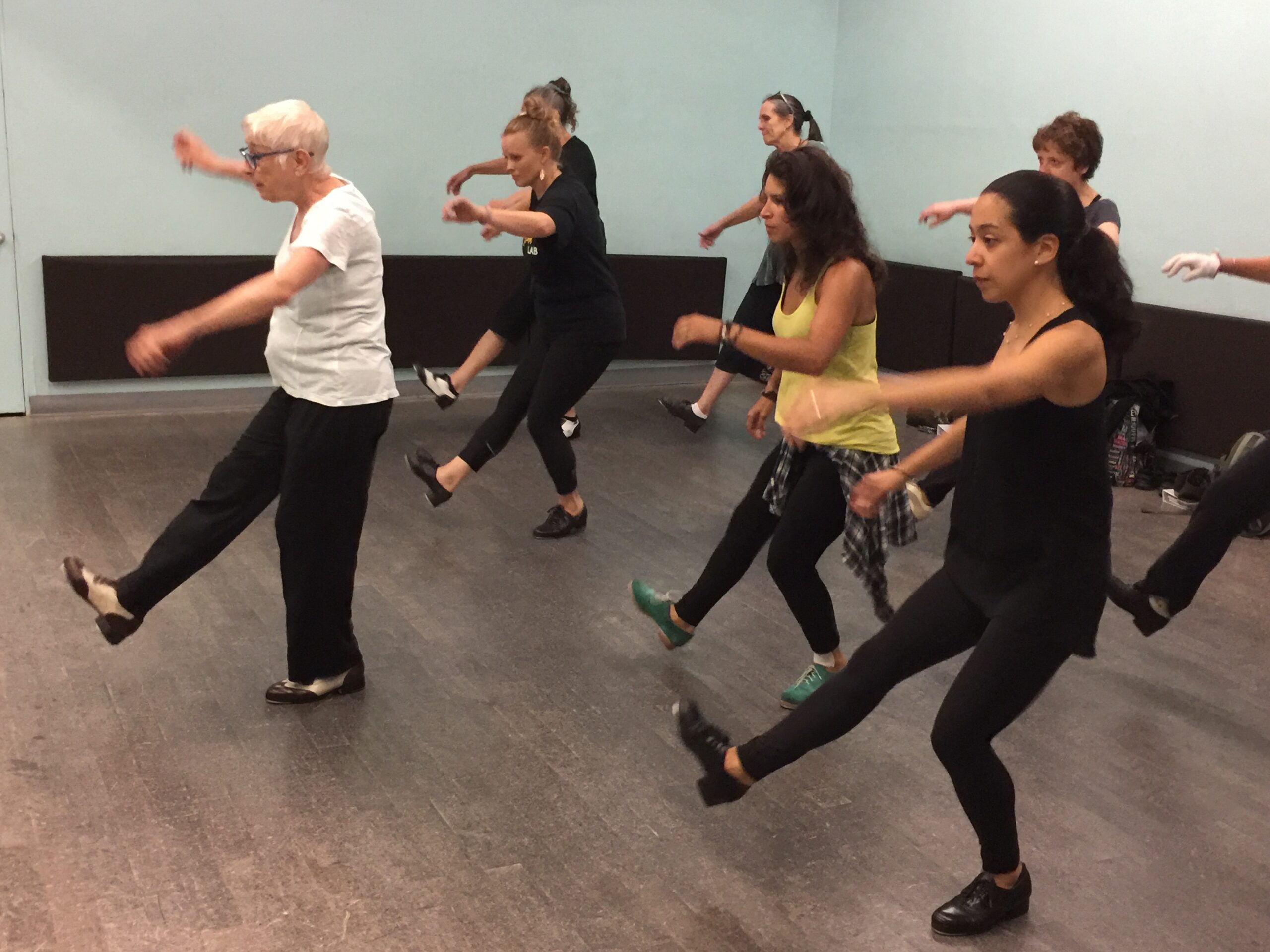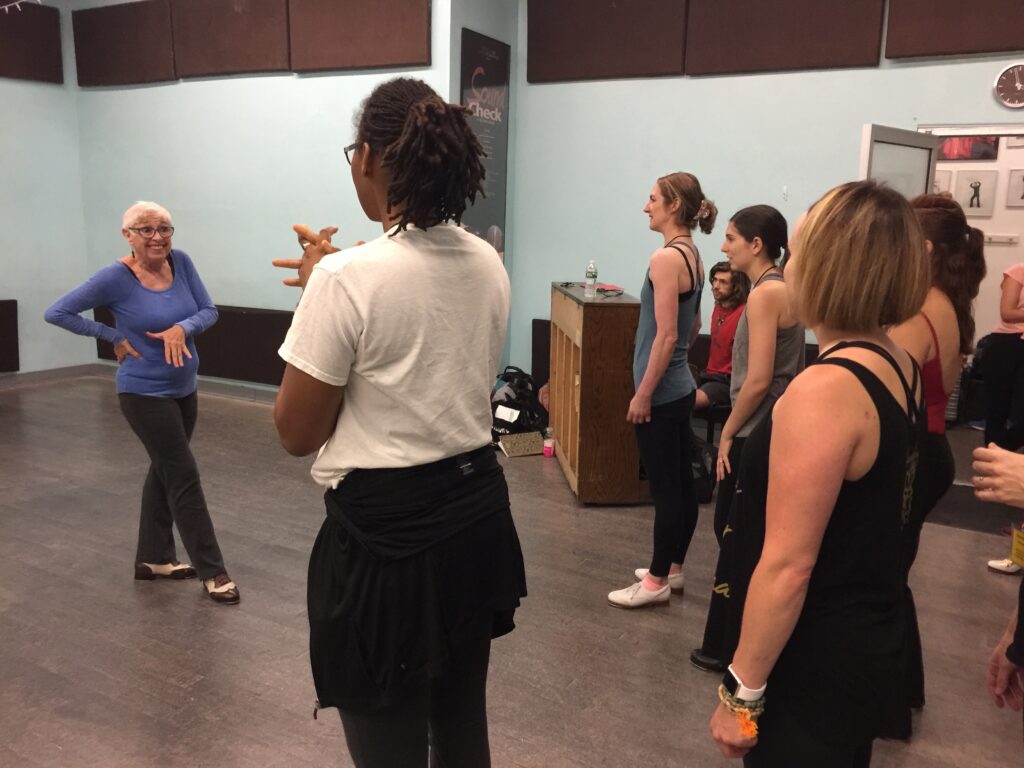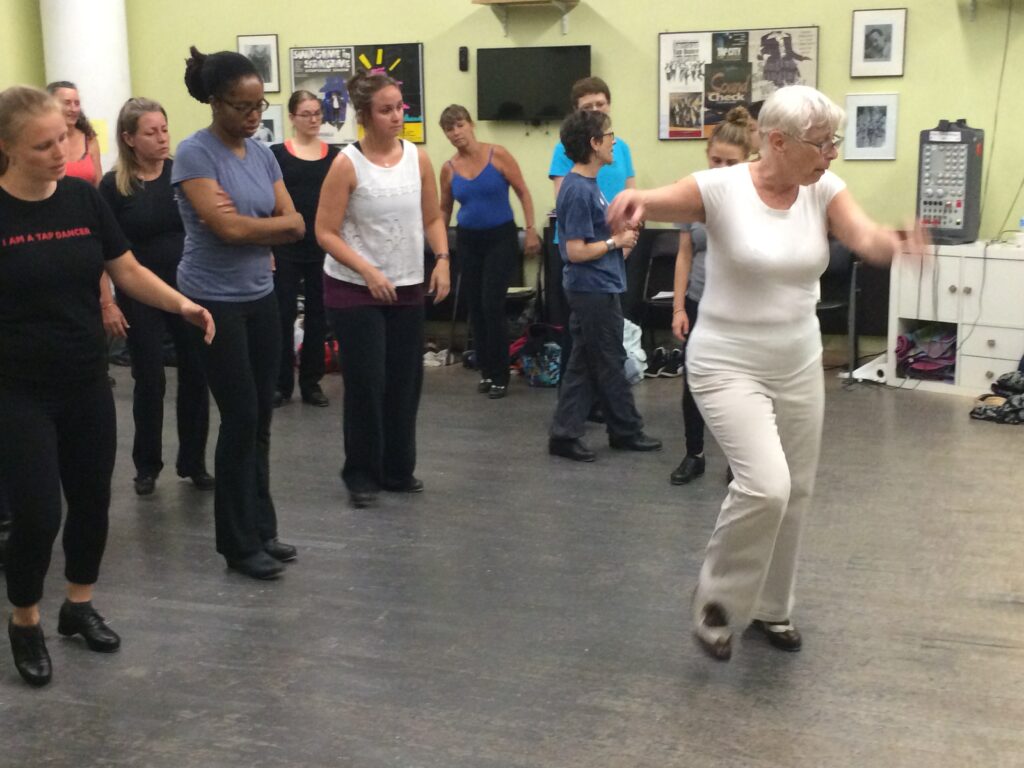
Legendary tap dancer, choreographer, author and master teacher Brenda Bufalino has been dancing for 80 years—and she’s still teaching! Not only that, but she continues to find new ways to inspire and guide her dancers to achieve unique style and dynamic sound in their own tap dancing.
Bufalino founded and was the choreographer for the revered American Tap Dance Orchestra, now the American Tap Dance Foundation. Long-time mentee and dance partner of Charles “Honi” Coles, she also collaborated with many tap greats, including Gregory Hines and the Nicholas Brothers. Today, she teaches at ATDF and tours in the U.S. and Europe as a master teacher.
Bufalino believes that her job as a dance educator is to ignite possibility in her students. And while it took her years to develop her methods, she now finds creative ways to help her students tap dance with less effort. Her long-developed practice of relaxation and foot articulations, combined with her creative use of tai chi, emotional proprioception and experimentation, have made her one of the greatest master teachers in the field. Here, she shares her tried-and-tested strategies for keeping dance classes fun and fresh.

Incorporate a New Art
Most recently, Bufalino began integrating tai chi in her class warm-up. The idea came to her when she was teaching Dorrance Dance one of her solos at Kaatsbaan Fall Festival. Bufalino noticed that while the dancers pulled and stretched to warm up their bodies, they lacked the relaxation necessary for her repertoire.
“Their absolute brilliance and attack was quite different from mine. They were doing difficult things with their body, but my difficult things were in the phrasing,” she explains. “Michelle [Dorrance] wanted me to work with them on technique, so I chose to work with them on tai chi every morning.”
Having regularly practiced tai chi herself, especially during the pandemic, Bufalino saw principles that were similar to tap dance. For example, the tai chi principle of “walking empty,” which involves transferring all your weight into one foot so the other becomes free and “empty,” benefits tap dancers working on weight shifting.
And once the Dorrance Dance company dancers were able to find relaxation through this practice, they were better prepared to perform Bufalino’s repertoire.
Build Your Awareness of Your Students
Bufalino recently began implementing the idea of “emotional proprioception” in her teaching. While proprioception is the awareness of the dancers’ body in space, with emotional proprioception, Bufalino actively tries to notice what her dancers need each day and in each class.
Bufalino uses her observations of the class to inspire what she teaches that day. “My dancers are teaching me,” she explains. “I look at them and who do I see? I see myself. So if I see someone who won’t shift their weight, then the whole class is going to damn well exaggerate shifting their weight! It’s useful for everybody, even for me.”
When Bufalino finds her dancers getting tense, she stops the class and asks them to “reintegrate”—telling them to feel their limbs, their breath, and sense the palms of their hands. According to Bufalino, stopping the class to shift focus or work on a different concept, like falling or weight shifting, not only makes the steps easier, but allows for more joy in the movement.
Practice Dependable Exercises
When Bufalino developed her tap technique for ease and efficiency of her body, she discovered that relaxation was the key. “So much of tap dance today is about the attack rather than the release,” she says. Instead of tensely striking the floor, she uses energy and the weight of her body to add depth and tonality to her sounds. To practice this relaxation, one exercise she gives her students is to have them see how low to the ground they can fall on one leg. Then she asks them to go lower and lower. “You don’t bang the floor, you fall,” she describes.

Bufalino uses this relaxation in addition to the tried-and-true foot articulations in her technique. These are small and intricate foot exercises that include long phrases of crawls, riffs and rhythm turns. In her book, Tapping the Source, Bufalino likens practicing these foundational rudiments to pianists working their fingers on scales. She says the repetition of foot manipulations should be done in various patterns and speeds. Such work gives a dancer the consistency and confidence to pick up steps easily, and even improvise.
What makes Bufalino’s technique unique is that she adds freedom to movement through relaxation. “It’s the difference between energy and feeling,” she explains. “If you only work from energy, you have a mechanic. But when you combine your energy and feeling, you have the artist.”
Experiment and Try Simple Things
Bufalino encourages teachers to be less focused on a product, such as completing a dance or getting ready for a recital, and more focused on developing the dancer’s artistry. That’s why she leaves a section at the end of class for experimentation.
Bufalino explains that when students see you, as the teacher, experimenting and composing in class, it gives them the license to try new things too. “You don’t have to be perfect,” she says. “You can try things, and if they don’t work, try something else!”
Bufalino also advises that experimenting doesn’t need to be complicated to be meaningful. On the contrary, she says the simplest things have a great impact. For example, she once recited poetry in class and asked her dancers to use it as a prompt for their movement. In another instance, she has asked her dancers to walk across the room in various tempos to two words, “Oh no.” These exercises allowed her dancers to step outside their comfort zone and explore their own artistry.
“The biggest thing [dance] teachers deal with is fear,” Bufalino says. “We have to prove something. We have to prove that we have the right to be there. I feel it, I’m not immune. But I give myself a talking-to. I tell myself that it will be alright. And then I look at my students and continue to be with them.”





